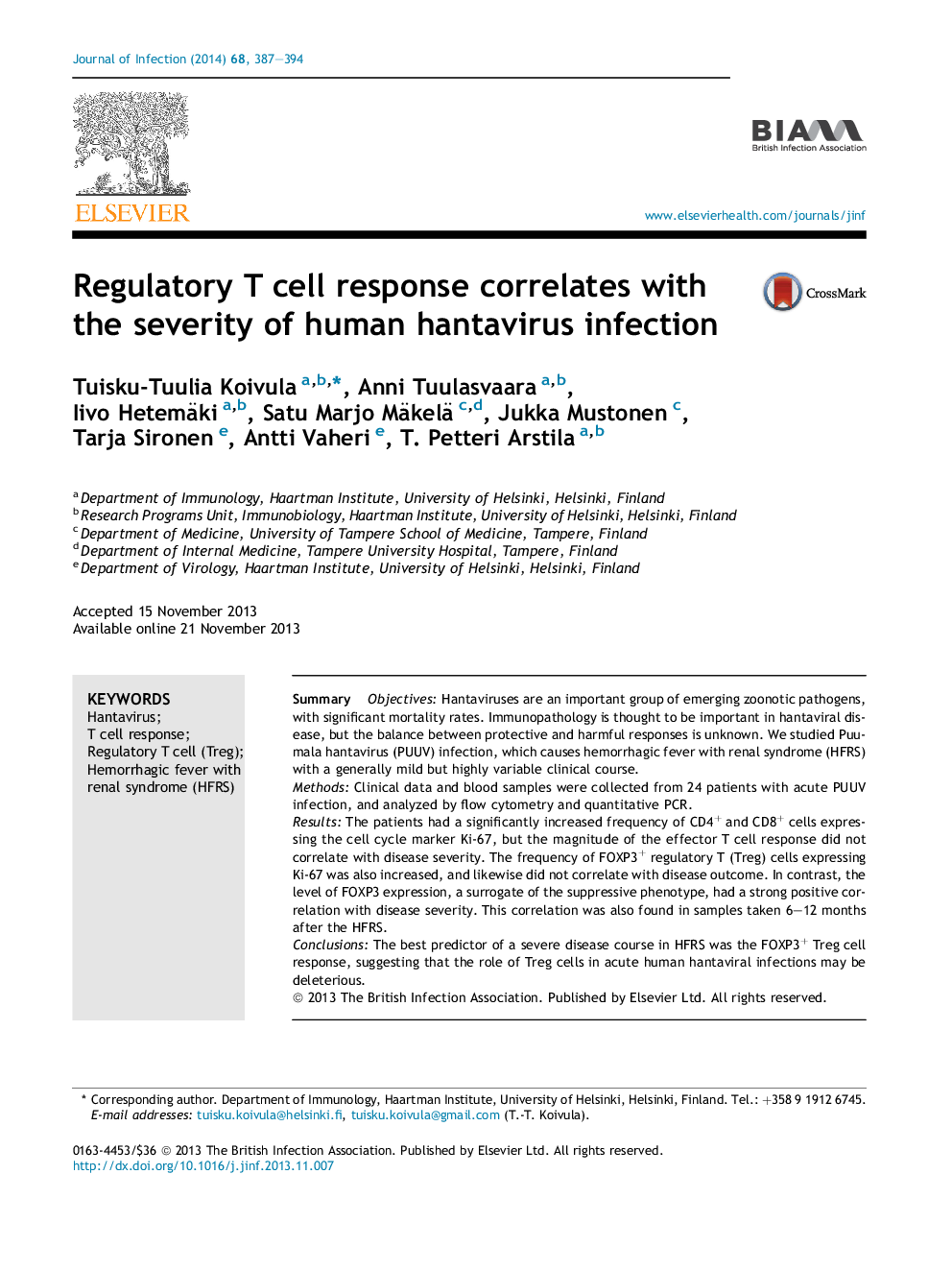| Article ID | Journal | Published Year | Pages | File Type |
|---|---|---|---|---|
| 6123179 | Journal of Infection | 2014 | 8 Pages |
SummaryObjectivesHantaviruses are an important group of emerging zoonotic pathogens, with significant mortality rates. Immunopathology is thought to be important in hantaviral disease, but the balance between protective and harmful responses is unknown. We studied Puumala hantavirus (PUUV) infection, which causes hemorrhagic fever with renal syndrome (HFRS) with a generally mild but highly variable clinical course.MethodsClinical data and blood samples were collected from 24 patients with acute PUUV infection, and analyzed by flow cytometry and quantitative PCR.ResultsThe patients had a significantly increased frequency of CD4+ and CD8+ cells expressing the cell cycle marker Ki-67, but the magnitude of the effector T cell response did not correlate with disease severity. The frequency of FOXP3+ regulatory T (Treg) cells expressing Ki-67 was also increased, and likewise did not correlate with disease outcome. In contrast, the level of FOXP3 expression, a surrogate of the suppressive phenotype, had a strong positive correlation with disease severity. This correlation was also found in samples taken 6-12 months after the HFRS.ConclusionsThe best predictor of a severe disease course in HFRS was the FOXP3+ Treg cell response, suggesting that the role of Treg cells in acute human hantaviral infections may be deleterious.
